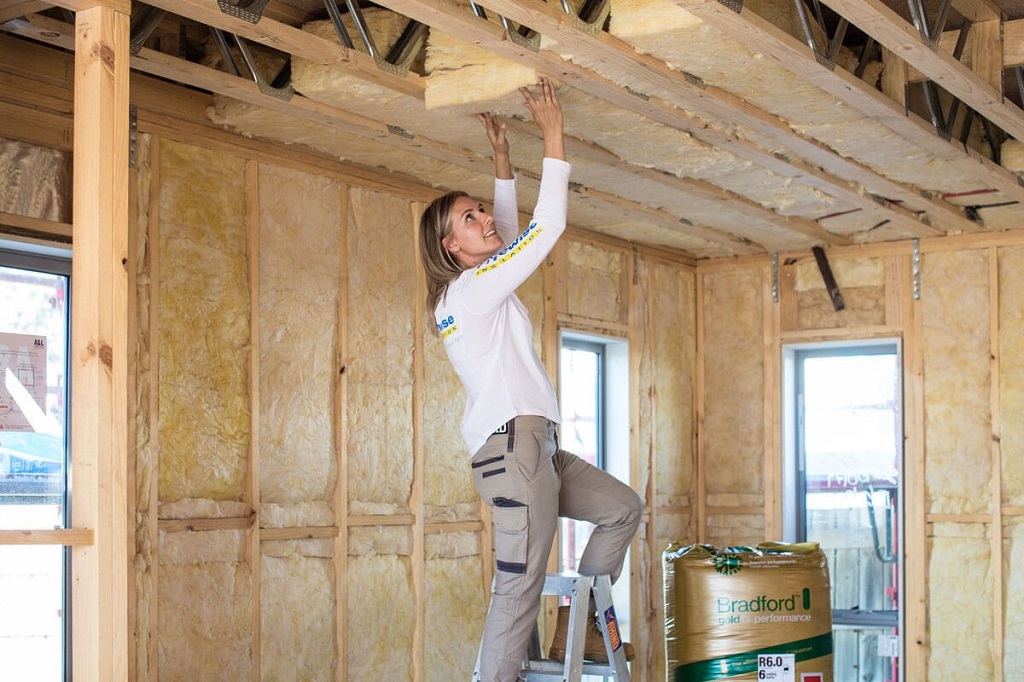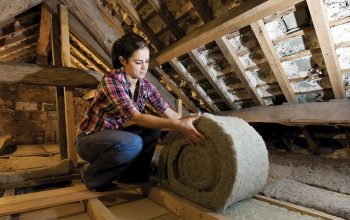Homeownership is an exciting milestone, but it comes with its own set of responsibilities. One essential aspect of maintaining a comfortable and energy-efficient home is proper insulation. If you’re a first-time homeowner, understanding insulation basics can save you money on energy bills, make your home more comfortable, and even increase its resale value. This guide will walk you through everything you need to know about home insulation, from the basics to advanced tips, so you can make informed decisions about your home’s energy efficiency.
What Is Home Insulation and Why Is It Important?
Home insulation is a material or system used to reduce heat transfer between the inside and outside of your home. During the winter, insulation helps retain warmth indoors, and in summer, it keeps the heat out. This creates a comfortable living environment while reducing the energy your HVAC system needs to maintain desired temperatures.
Benefits of Proper Insulation
- Energy Savings: Proper insulation can reduce heating and cooling costs by up to 20%.
- Comfort: It minimizes temperature fluctuations, creating a more stable indoor climate.
- Soundproofing: Insulation can also act as a barrier to reduce noise from outside.
- Environmental Impact: Less energy consumption means a smaller carbon footprint.
- Increased Property Value: Energy-efficient homes are often more appealing to buyers.
Types of Insulation Materials
- Fiberglass
- Made from fine glass fibers.
- Affordable and widely available.
- Excellent for walls, attics, and floors.
- Spray Foam
- Expands to fill gaps and crevices.
- Ideal for sealing air leaks and providing high R-values.
- Slightly more expensive but highly effective.
- Cellulose
- Made from recycled paper treated for fire resistance.
- Eco-friendly and good for insulating attics and walls.
- Rigid Foam Boards
- Made from polystyrene, polyisocyanurate, or polyurethane.
- Provides high R-values and works well for basements and exterior walls.
- Mineral Wool
- Made from molten rock or industrial waste.
- Fire-resistant and suitable for soundproofing.
Understanding R-Value
R-value measures an insulation material’s ability to resist heat flow. The higher the R-value, the better the insulation. The required R-value depends on:
- Climate Zone: Homes in colder areas require higher R-values.
- Location in the Home: Attics often require higher R-values than walls or floors.
Key Areas to Insulate in Your Home
- Attic
- Heat rises, making the attic one of the most crucial areas to insulate.
- Insulate the attic floor and seal any air leaks.
- Walls
- Insulating walls prevents heat transfer through your home’s largest surface area.
- Both interior and exterior walls can benefit from insulation.
- Floors
- Particularly important for homes with crawl spaces or basements.
- Insulated floors can prevent cold drafts.
- Basement and Crawl Spaces
- Prevents moisture issues and heat loss.
- Use moisture-resistant materials.
- Windows and Doors
- Seal gaps with weatherstripping or caulking.
- Consider insulated or double-pane windows.
How to Choose the Right Insulation
- Assess Your Climate
- Warm climates may prioritize reflective insulation to reduce heat gain.
- Cold climates benefit from high R-value insulation.
- Evaluate Your Budget
- While some materials may have a higher upfront cost, they can save more in the long run.
- DIY vs. Professional Installation
- DIY installation can save money, but professionals ensure better coverage and efficiency.
- Consider Eco-Friendly Options
- Materials like cellulose or sheep’s wool are sustainable choices.
DIY Installation Tips for First-Time Homeowners
- Safety First: Wear gloves, a mask, and protective clothing when handling insulation materials like fiberglass.
- Seal Air Leaks: Before adding insulation, seal gaps and cracks in your walls, ceilings, and around windows.
- Measure Correctly: Measure the area to ensure you buy the right amount of insulation.
- Install in Layers: For attics and walls, consider layering insulation for maximum coverage.
Signs Your Home Needs More Insulation
- High Energy Bills: Poor insulation can make your HVAC system work harder.
- Uneven Temperatures: Hot or cold spots in your home may indicate insufficient insulation.
- Drafts: If you feel cold air near windows or doors, you may need additional insulation.
- Ice Dams: In colder climates, ice buildup on your roof may signal poor attic insulation.
Read More Also: How to Style a Dining Room Table
Cost and ROI of Home Insulation
The cost of insulating your home varies depending on the materials, area size, and labor. Here’s a general breakdown:
- Fiberglass Batts: $0.50–$1.00 per square foot.
- Spray Foam: $1.50–$3.00 per square foot.
- Cellulose: $0.80–$1.20 per square foot.
While upfront costs may seem high, insulation often pays for itself in energy savings within 3–5 years.
FAQs about Home Insulation
1. How often should I replace home insulation?
Insulation can last decades, but its effectiveness may decrease over time due to moisture or wear. Check your insulation every 10–15 years.
2. Can I add new insulation over old insulation?
Yes, as long as the old insulation is dry and free of mold. Avoid using materials with vapor barriers over existing insulation.
3. Is there government assistance for insulation upgrades?
Many governments offer rebates, tax credits, or grants for energy-efficient home improvements. Check with local authorities.
4. What is the best insulation for soundproofing?
Mineral wool and spray foam are excellent for reducing noise.
5. Does insulation help in hot climates?
Absolutely. Reflective insulation and materials with low thermal conductivity can keep your home cool.
Conclusion
For first-time homeowners, understanding home insulation is essential to creating a comfortable and energy-efficient living space. Proper insulation not only saves money but also enhances your home’s overall value and environmental impact. Whether you’re insulating your attic, walls, or floors, selecting the right materials and ensuring proper installation is crucial.
By following this guide, you’re well on your way to making informed decisions that will benefit you and your home for years to come. Start with an insulation assessment today and take the first step towards a more efficient and cozy home.








